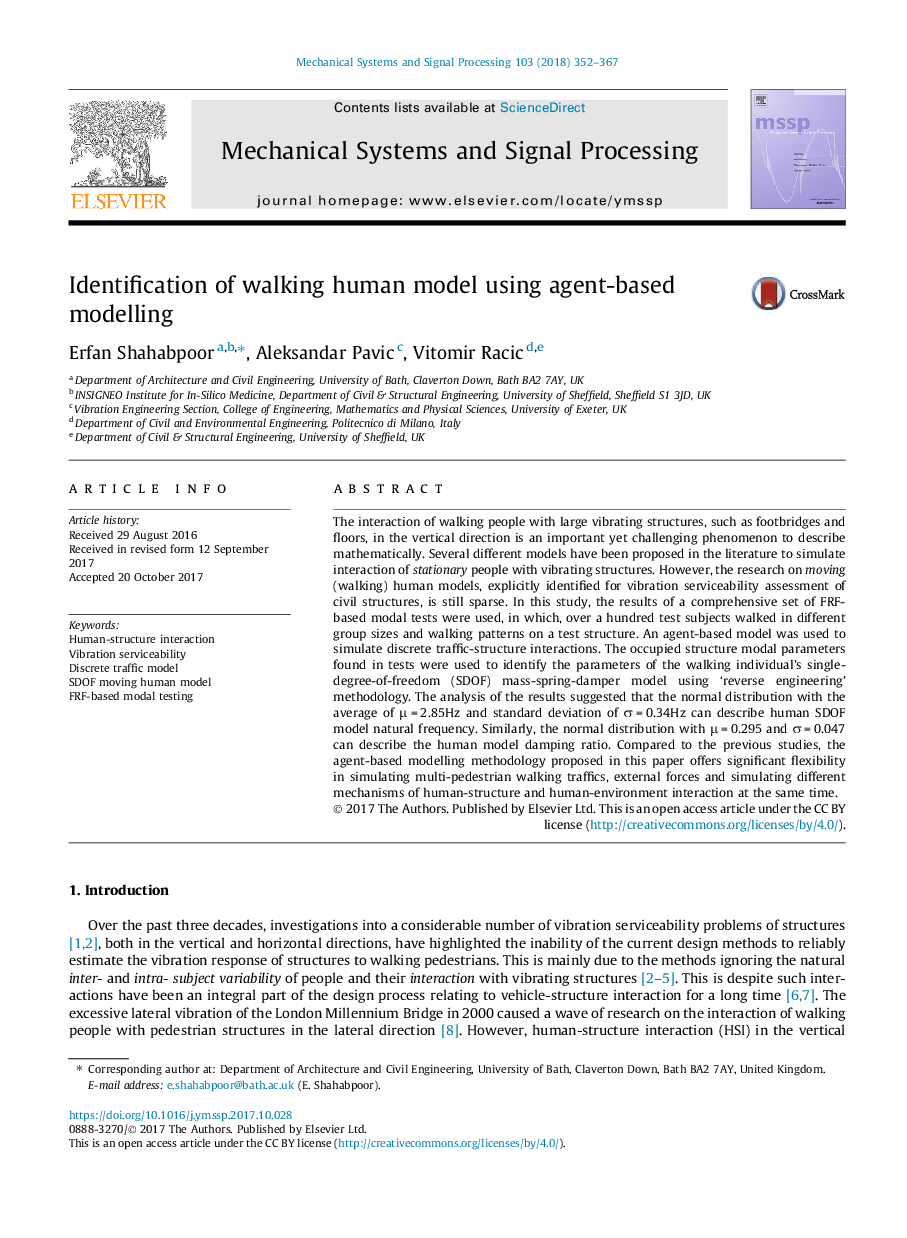| Article ID | Journal | Published Year | Pages | File Type |
|---|---|---|---|---|
| 6954779 | Mechanical Systems and Signal Processing | 2018 | 16 Pages |
Abstract
The interaction of walking people with large vibrating structures, such as footbridges and floors, in the vertical direction is an important yet challenging phenomenon to describe mathematically. Several different models have been proposed in the literature to simulate interaction of stationary people with vibrating structures. However, the research on moving (walking) human models, explicitly identified for vibration serviceability assessment of civil structures, is still sparse. In this study, the results of a comprehensive set of FRF-based modal tests were used, in which, over a hundred test subjects walked in different group sizes and walking patterns on a test structure. An agent-based model was used to simulate discrete traffic-structure interactions. The occupied structure modal parameters found in tests were used to identify the parameters of the walking individual's single-degree-of-freedom (SDOF) mass-spring-damper model using 'reverse engineering' methodology. The analysis of the results suggested that the normal distribution with the average of μâ¯=â¯2.85Hz and standard deviation of Ïâ¯=â¯0.34Hz can describe human SDOF model natural frequency. Similarly, the normal distribution with μâ¯=â¯0.295 and Ïâ¯=â¯0.047 can describe the human model damping ratio. Compared to the previous studies, the agent-based modelling methodology proposed in this paper offers significant flexibility in simulating multi-pedestrian walking traffics, external forces and simulating different mechanisms of human-structure and human-environment interaction at the same time.
Related Topics
Physical Sciences and Engineering
Computer Science
Signal Processing
Authors
Erfan Shahabpoor, Aleksandar Pavic, Vitomir Racic,
